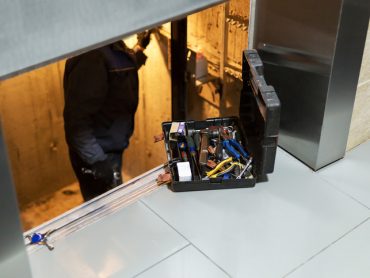To Renovate or Not to Renovate
The decision to renovate or refurbish is often complex, as it is the ultimate crossroads of finance and marketing. Is the proposed capital investment justified?
Recently, I stayed at a Forbes five-star luxury, downtown property in a major domestic center. A decade old, the hotel has buoyant F&B, catering and spa businesses. TripAdvisor ratings hover around the 4.8-plus level. Everything is perfect, right?
As a guest who has stayed at this property well over two-dozen times over the past seven years, the property feels, well, like home. The rooms are comfortable; the bathrooms are flawless; it even has automatic drapes. But something is wrong.
Annually, I stay at 30-40 different luxury hotels – a number that is hardly out of the realm of possibility for the modern premium-class traveler. With every hotel stay, I’m looking for something exciting and different. When I venture into the abovementioned property, while I appreciate the familiarity, my mind craves the new.
When is the Right Time
The economics of renovation are complex, particularly when the physical operations are all copacetic and nothing is really broken. A further complication for upper echelon properties is that quality furnishings can outlast their psychologically useful life. As an operator, how do you convince your owners to replace a million dollar’s worth of hardgoods that still function, even though they’re ten or more years old?
You might think that a soft goods upgrade is the appropriate stop-gap solution. A typical soft upgrade of paint, carpeting, wallpaper, bedspreads, bed skirts, upholstery and drapes can be in the $30,000 per room range, depending upon the quality of materials, size of room and other exceptionalities. At this point, the guestroom is refreshed and feels, at least superficially, like new. And for those with high year-round occupancies, the out-of-service time can be measured in weeks, not months, to further reduce implementation costs.
In these situations, competition can often be a catalyst for a renovation decision. If your comp set includes many properties newer than yours, you would be hard-pressed not to consider upgrades well in advance of declining guest satisfaction measurements.
Here are some of the indicators that you need to renovate:
- Your property is approaching its tenth anniversary and you haven’t undertaken any renovations to-date
- You’ve undertaken a round of soft goods renovations in the past but your hardgoods are over a decade and a half old and are starting to show their age
- Your competition has undertaken extensive upgrades or you have new competitors chewing away at your price point
- Your room type allocation no longer meets your sales requirements, typically represented as not enough suites or too many smaller rooms
- You anticipate that there is a significant rate growth opportunity in the marketplace, but your product is not good enough to take advantage of it
- Guest interviews and commentary are no longer glowing but neutral with customers identifying minor issues and getting particularly granular for no apparent reason
Setting Aside Budget
Chances are you would know when to move on this. You will then need to build a case for your owners. Never fear as any renovation or refurbishment is exciting as well as a true test of your senior management mettle.
The first way to get the owners on your side is to build a proper capital expenditures ledger so that all future non-operating budgetary expenses can be properly forecasted, reconciled and depreciated. The more detailed your capital budget document, the easier it is for owners and developers to see where their money is going and understand why the costs are the way they are.
As for a capital plan’s development, start by including everything non-consumable that has not yet been approved for the rest of the calendar year, allocated by quarterly cash requirements for each line item. By doing so, these expenses can be effectively deferred to the following fiscal cycle, understanding that sometimes a project is authorized ahead of time while payments for that project stretch across multiple quarters. In tandem with this, you need to set goal dates for various department heads and other senior executives to submit their portions so you can review internally before going to the owners.
Be as comprehensive as you can in this plan, as you never know when you might need to sink some serious dollars into upgrades beyond just hard and soft goods in the guestrooms. To get you thinking on the right track, F&B may include everything from catering upgrades to a restaurant rebranding. Then there are also the back-of-house upgrades for electrical, plumbing, HVAC, IT systems, maintenance equipment and the physical plant.
The objective of all this detail is not to get the tacit greenlight to start spending but to make every project defensible through the lens of growing revenue so that it’s as easy as possible for the owners to say yes. Whether or not you ultimately decide to complete a renovation, putting the wheels in motion with a solid plan well in advance of the inevitable upgrades will always be a worthwhile exercise.




